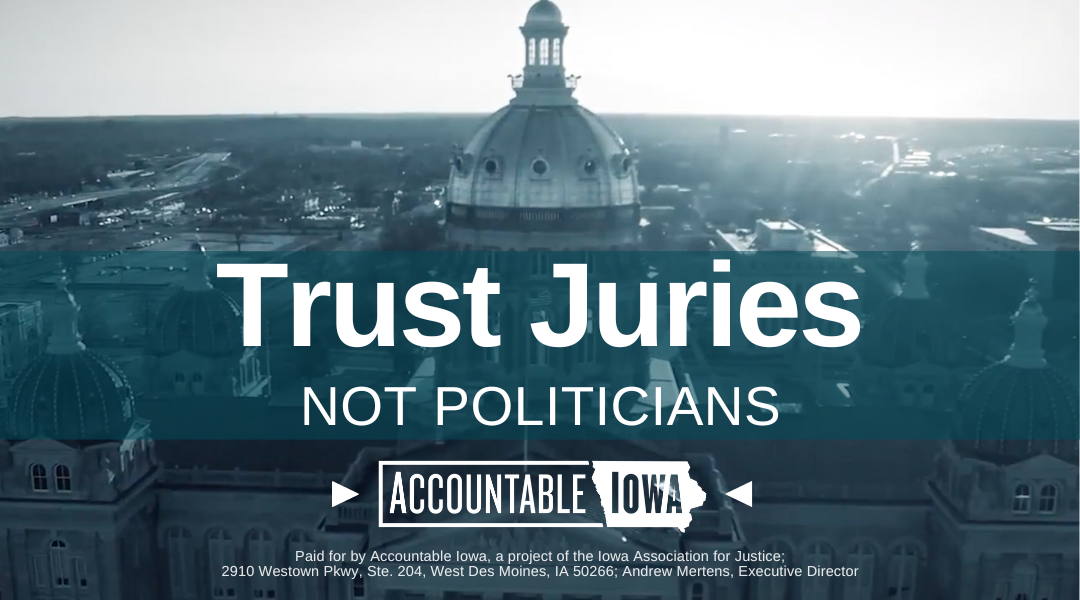A bill to address security in schools moved through committee this past week. This is largely in response to the tragic school shooting in Perry a couple months ago. This bill creates a fund for a grant program for schools to employ private school security officers or school resource officers, and allows school employees to qualify for professional permits to carry weapons.
In more detail:
School Security Officer Grant Program
The bill requires each school board of a district with a total enrollment of at least 8,000 students to employ or retain the services of at least one private school security officer or school resource officer (SRO) to guard each attendance center where students in grades 9-12 regularly attend classes unless a majority of the members of the school board vote to opt out of the requirement.
Each school board of a district with a total enrollment of less than 8,000 students is encouraged, but not required, to employ or retain the services of at least one private school security officer or SRO to guard each attendance center where students in grades 9-12 regularly attend classes.
A private school security officer employed or retained by a school board must participate in the annual live scenario training and quarterly live firearms training provided by the Department of Public Safety (DPS).
The bill directs the Department of Education (DE) to develop and administer a school security personnel grant program to provide annual grants to match funds provided by a school district to help offset the costs involved in hiring a private school security officer or SRO. The annual amount of a grant is not to exceed $50,000 for each attendance center that provides education to students grades 9-12.
Professional Permits to Carry for School Employees
The bill also allows school employees of school districts, private schools, and institutions of higher education to be issued a professional permit to carry weapons. The employee must complete a firearm safety training course before getting a permit. Again, school employees are allowed, not required.
A school employee issued a permit to carry must take a one-time, in-person legal training approved by DPS that includes training on qualified immunity, annual emergency medical training, and annual communication training. DPS must implement required annual live scenario training and quarterly live firearm training for school employees of school districts, private schools, or institutions of higher education that opt into participating in the professional permitting of school employees.
A school employee issued a professional permit to carry by DPS who is up to date with DPS-approved training and their school district are entitled to qualified immunity from criminal or civil liability for all damages incurred pursuant to the application of reasonable force at their place of employment.
The identity of a school employee issued a permit to carry must be confidential. This is part of the deterrent effect of the policy. School employees must not be required to obtain a permit to carry.
Cost
It is estimated to cost $17.2 million to fully fund the school security personnel grant program which would require large schools with dedicated high schools to employ an armed guard, unless the school board votes to opt out, and provide matching state funds up to $50,000 per attendance center.
It is also estimated to cost DPS $600,000 and 8.0 new employees to support the training of private school security officers and school employees authorized to receive professional permits.
Background
Two school districts in Iowa (Cherokee and Spirit Lake) have tried to create policies to allow their employees to carry firearms but ran into trouble finding insurance coverage. This bill allows school employees, with the proper training, to be entitled to qualified immunity from damages.
According to the Iowa Poll (from the Des Moines Register, asked of 804 adults between February 25-28), 60 percent of Iowans say they support arming teachers and staff (38 percent said they oppose it and 1 percent were unsure). Among parents with children under the age of 18, 65 percent said they favored staff carrying firearms in school.
Conclusions of a study by the Crime Prevention Research Center
A study was conducted in 2019 by the Crime Prevention Research Center using federal data on school shootings to determine if letting school staff carry firearms in schools create dangers and if deters attackers. Twenty states currently allow teachers and staff to carry guns to varying degrees on school property. There hadn’t yet been a single case of someone being wounded or killed from a shooting, let alone a mass public shooting, between 6 AM and midnight at a school that lets school staff carry guns. Fears of school staff carrying guns in terms of such problems as students obtaining staff guns had not occurred at all, and there was only one accidental discharge outside of school hours with no one was really harmed. While there were not any problems at schools with armed teachers, the number of people killed at other schools without armed staff had increased significantly.
The study found law enforcement are very important in fighting crime, but a single officer in uniform faces an almost impossible task in stopping mass public shootings. Officers become the first targets in these attacks, as attackers know that if they kill the officer, they will have free reign to continue their massacre. Even if officers aren’t in uniform, attackers may be able to guess from their behavior that they are standing guard.
Additionally, it was found that increasing funding for mental health services has its benefits, but it is hard for mental-health professionals to identify patients who pose a serious violent threat. It’s common for mass killers to have already been seeing psychiatrists before their attacks. But mental health professionals are often unable to identify when someone is at risk of becoming violent. Psychiatrists overlooked the dangers posed by Ivan Lopez (the Fort Hood shooter), Adam Lanza (Sandy Hook Elementary), James Holmes (“Batman” movie theater) and Seung-Hui Cho (Virginia Tech). From January 1998 through May 2018, 42 percent of mass public shooters were seeing mental health care professionals before their attacks. In only one of those cases had the killer previously been identified as a danger to others.
Often, following a school shooting, there are immediate calls for laws such as universal background checks. Ironically, this study found there is not one mass public shooting this century that would have been stopped by universal background checks, even with a perfectly enforced law.
Conclusion:
Outside of arming teachers and staff, there’s only so much that can be done to secure our schools. Several years ago the legislature passed a law allowing for the SAVE penny money used for school infrastructure to be used for various structures, equipment, and technologies to be purchased to increase school security. Many schools have taken advantage of those funds and also require outside doors to be opened by school officials from the inside to let someone in.
I supported this bill to provide funding for security officers and to arm school staff in committee. I think it’s safer for students and teachers in the school building to be able to call upon someone in the building who is armed and could potentially end any threat from an active shooter much faster than if law enforcement must be summoned to the building to end an active shooter situation. As capable as our law enforcement are and they absolutely should be called, it would just take them too long to get there. It is much better to have someone at the school already trained and ready to handle the situation. Ending an active shooter scenario is better done in seconds rather than minutes.

















